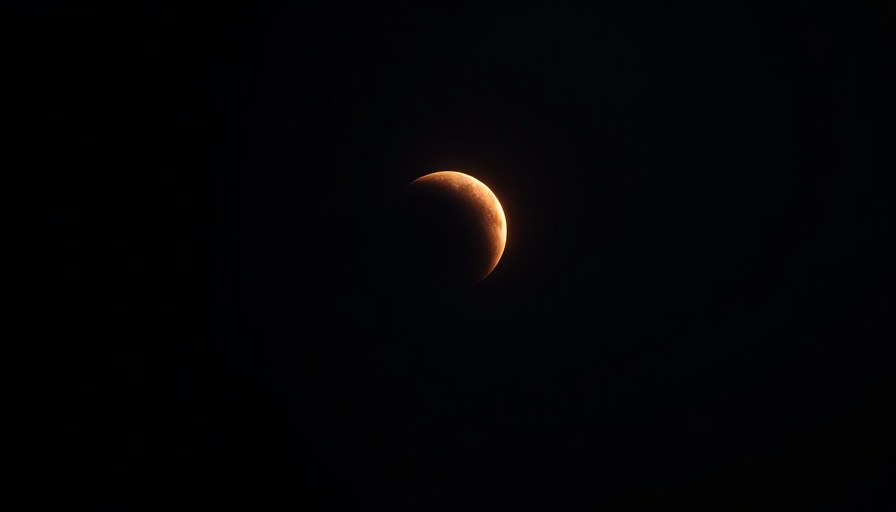
A Celestial Symphony: Witnessing the Total Lunar Eclipse
On the night of March 9-10, 2025, a total lunar eclipse will cast a breathtaking copper-red hue upon the moon, particularly observable across North and South America. As the Earth aligns itself perfectly between the sun and the moon, a celestial ballet unfolds, resulting in one of nature's most awe-inspiring events.
Understanding the Science Behind the Red Moon
A total lunar eclipse occurs when the Earth’s shadow fully envelops the moon, blocking direct sunlight. However, indirect light still filters through the Earth's atmosphere, scattering shorter wavelengths and allowing only the longer, red wavelengths to reach the moon. This phenomenon grants rise to the evocatively named “blood moon,” a term that has historical significance and cultural interpretations across various civilizations.
Optimal Viewing Tips: How to Enjoy the Eclipse
The total eclipse will peak at 3:00 AM Eastern Time, offering prime viewing conditions for those situated in the Western Hemisphere. Observers simply need to step outside and look skyward, free from any cumbersome equipment or special glasses. Clear nights will provide optimal viewing, though moonset may hinder visibility in parts of Europe and Africa.
Historical Significance of Lunar Eclipses
Human fascination with lunar eclipses extends back centuries. Ancient peoples meticulously observed these cosmic events, often infusing them with deeper meanings. Some believed blood moons were omens, with civilizations such as the Mesopotamians placing great stock in lunar events as indicators of their leaders' fates. As noted by historian Zoe Ortiz, their astute observations proved crucial in understanding natural patterns, such as the curvature of shadows, which in turn led to the discovery that the Earth is spherical.
Future Eclipses on the Horizon
If you happen to miss this total lunar eclipse, don't fret. Mark your calendars for September 7, 2025, when another total lunar eclipse will grace the skies, visible from parts of Asia, Africa, Europe, and Australia. Observers in the Americas will next have their turn in March 2026. Each eclipse presents an opportunity not only to witness a cosmic spectacle but also to reconnect with the ancient traditions of stargazing and sky interpretation.
Cultural Impact: Embracing Celebrations of Celestial Events
In our modern era, the total lunar eclipse continues to inspire awe and wonderment. Communities often gather to share the experience, teaching younger generations about science, astronomy, and the importance of celestial phenomena in cultural heritage and storytelling. Participating in local events or simply sharing the moment with friends and family can enhance the experience and foster a deeper connection with the cosmos.
Join the Cosmic Experience
As we approach the total lunar eclipse, take advantage of this rare opportunity to engage with the night sky. Don’t just watch—share your experience and inspire others to do the same! Plan your night ahead to ensure you won’t miss this awe-inspiring sight. Whether you’re an astronomy enthusiast or simply curious, witnessing the moon turn red is a moment that beckons us all to step outside, breathe in the night air, and marvel at the wonders of the universe.
 Add Row
Add Row  Add
Add 




Write A Comment